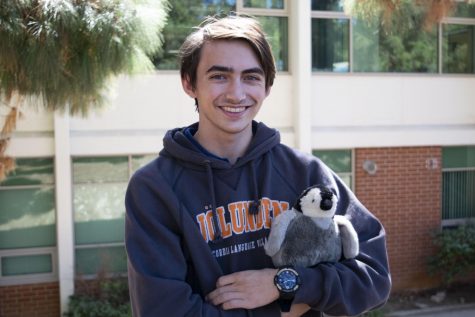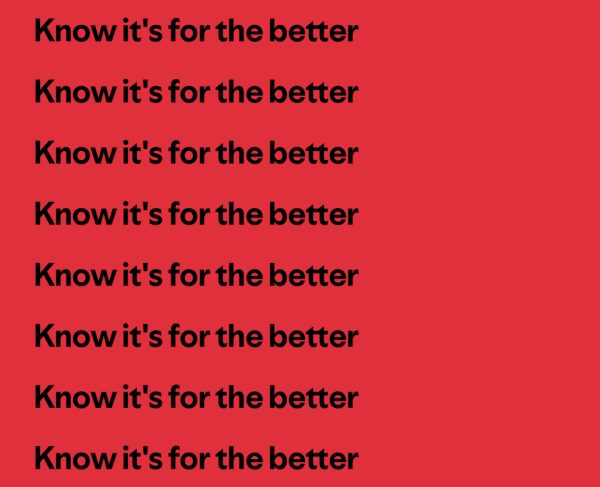Forging friendships and learning languages: my Sjölunden experience
Stockholm, the mess hall and main building, can be seen from almost anywhere at Sjölunden. I took this photo on my last day there from the gazebo where we usually danced to ABBA all together.
My whole life I’ve been immersed in language. On my mom’s side, my grandmother Masako, who helped raise me, is Japanese from the island of Okinawa. On my dad’s side, I’m Swedish, and I’ve been taking part in Swedish events through the Vasa Order of America for the past few years. Language learning is one of my favorite hobbies, and I hope to learn more of them in the future.
This summer, I was given that opportunity. My sister and I won a scholarship from Vasa to attend Sjölunden, a Swedish language immersion camp. It was to be a two week overnight experience out in Bemidji, Minnesota where we’d be spoken to only in Swedish. We’d both been through a Spanish immersion program as part of elementary and middle school, but I was still somewhat hesitant. The prospect of being away without internet or any of my belongings in such a different state for two weeks seemed daunting, but before I knew it my sister and I were boarding our second flight into Bemidji. My sister and I were the last ones to arrive at our cabins, and by then it was already very late.
I had attended Sjölunden through their online session the year before as I was supposed to attend in-person that year, but that was basically just a language lesson each day. The most I could say in Swedish was “hello”, and I felt very apprehensive about being in a setting where I knew almost nothing.
Sjölunden is a part of Concordia Language Villages, a group of other sites all situated around the same lake. Each other village hosts a different language; they have Spanish, Arabic, Italian, German, Japanese, and a few more. Sjölunden, which translates to lake in the woods, was originally a Finnish camp that now shares the property with the Swedish camp.
Every day consisted of three meals, one language lesson, and three activities, as well as a rest period called tupplur, which is basically siesta. My cabin mates were all beginners with Swedish so our lessons started with simple phrases we needed to get around camp like “my name is…” or “I’m feeling…”. We would often go outside and pass a frisbee between each other while asking one of our basic questions to the person catching the frisbee, who would then answer and repeat.
Over the course of the two weeks, I learned numbers, pronouns, basic conversational phrases, some object names, and colors. While I’m far from a native speaker, being in a setting where I had to learn quickly has ultimately made me feel more comfortable with the language as well as able to understand a lot of what’s said to me.
Every day we’d all meet with the other groups for meals in the main building, which was referred to as Stockholm, where they would serve us a mix of traditional Swedish food and more familiar American food. We had a lot of knäckebröd in particular, which is a kind of crunchy flatbread. I also took a cooking activity towards the end of the trip where I made several Swedish desserts like cardamom cookies and lemon cake.
There were a plethora of activities each day from weaving with traditional looms to swimming down by the Finnish sauna to learning about Swedish music history. They also had camp-wide activities in the evening every night. We played Swedish game shows, made music videos, and had an outdoor fair where each cabin came up with something to “sell” to the rest of the camp. My cabin made tea from the chamomile and lemongrass that was growing around the camp and it turned out surprisingly drinkable.
My favorite event they held was Midsommar—Midsommar is one of the biggest celebrations in Swedish culture that dates back centuries as a celebration of the warmer months of spring and summer, and people of all ages celebrated. Everyone dressed more formally before we all went down to the soccer field to decorate and raise the majstång or maypole. We then danced and sang around it for a good while before having a traditional Swedish lunch.
While I was initially not very eager to attend the camp, I left wishing I could spend more time there. One of my favorite things about Sjölunden was the fact that they did not make it feel like school. I felt more like I was living in a community than learning in a class, even when I was in the dedicated lesson periods. One of the things I liked most was how much I remembered as a result of the many camp songs we sang. I’ve never been much for singing in a group, but it was hard to stay uninvolved in such a high-spirited environment.
I recall feeling very similar on the first day of camp to how I did my first day of kindergarten. Both times I was thrust into an environment where I understood almost none of what was said to me, and though it took some getting used to, I came out of it having learned a lot.
While I probably can’t return to the camp next year because I’m graduating, it was definitely an experience I’ll never forget. All the people I met and things I took part in will stick with me for the rest of my life, and the time I spent at Sjölunden has inspired me to keep my passion for language ablaze.

Dream destination? Okinawa, Japan
Interests/ hobbies? Drawing, animating, the martial arts, reading, language learning
In...













